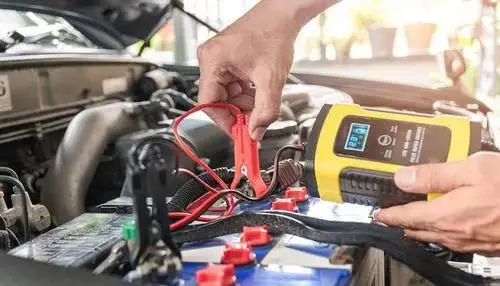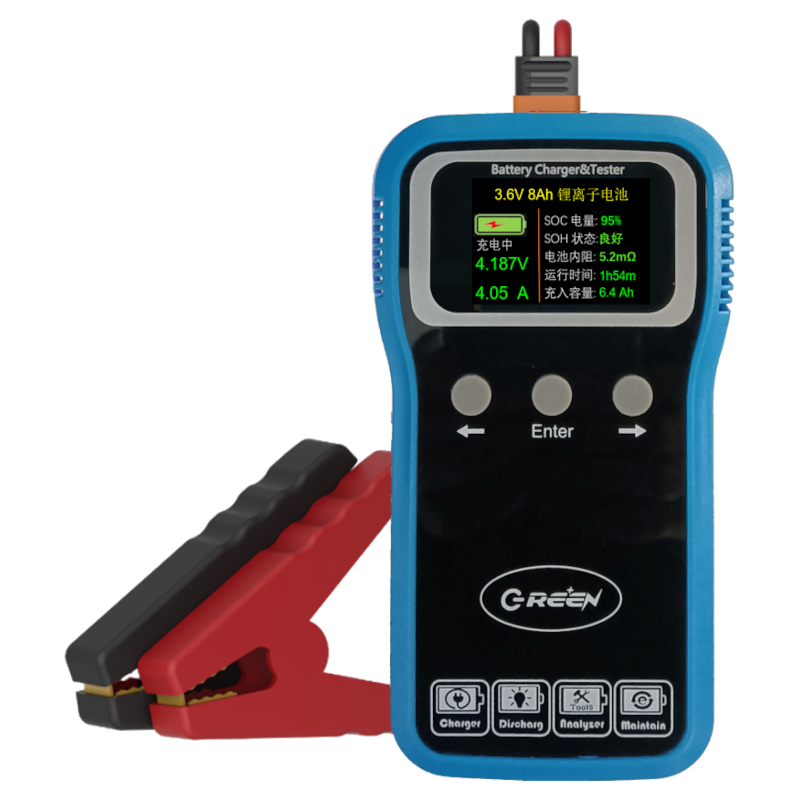Can I charge my car battery with a portable charger?
Published:2024-09-25 23:07:10 Author:超级管理员 Views:49
Yes, but please pay attention to certain safety precautions:
Can I use a small charger to charge a car battery?
Regarding portable battery charger for car, using a small charger is an option, but it is crucial to ensure that the charger's rated voltage matches the battery's specifications. To cater to daily convenience, a charging current of approximately 13% of the battery's capacity is commonly chosen. However, for safety reasons, we do not recommend using a charger with an excessively low current as this can significantly extend the charging time and potentially damage the battery. Therefore, selecting a charger with an appropriate rated voltage and a moderate charging current is essential to ensure effective charging while prolonging the battery's lifespan.
Connecting a Portable Battery Charger to a Car
Preparation
Wear Protective Gear: To protect yourself, it is advisable to wear protective clothing and goggles, and remove any potentially conductive jewelry.
Check Equipment: Ensure that both the portable battery charger and the car battery are in good condition, free from damage or signs of corrosion.
Read the Manual: Consult the user manual of the portable battery charger for specific operation instructions and precautions.
Identifying Battery Voltage
Locate Battery Information: Find the voltage rating on the car battery, typically marked as "12V" or "6V".
Match Voltages: Ensure that the DC output voltage of the portable battery charger matches the voltage of the car battery.
Identifying Battery Terminals
Identify Positive and Negative: The positive terminal of the car battery usually has a plus sign (+), the letter P, or the abbreviation POS, while the negative terminal is marked with a minus sign (-), N, or NEG.
Prepare Clamps: Ensure that the portable battery charger comes with a red positive clamp and a black negative clamp, and that they are clean and free from corrosion.
Connecting the Charger
Connect the Positive:
Ensure that the charger is turned off and unplugged.
Connect the red positive clamp to the positive terminal of the car battery. If the car has a remote positive terminal, use that for connection.
Connect the Negative:
Connect the black negative clamp to the car's frame or engine block, ensuring that the clamp is as far away from the battery as possible to reduce the risk of sparks.
Avoid connecting the clamp to the carburetor, fuel lines, or any parts that may be damaged by electrical current.
Turning On the Charger
Set Voltage and Current: Based on the car battery's voltage, set the voltage switch on the charger to the corresponding value (e.g., 12V). Then, select the appropriate charging rate (e.g., 2A, 6A, 12A, or 30A) as needed.
Plug In and Power On: Plug the charger's power cord into a grounded outlet and turn on the charger switch to begin charging.
Completing the Charge
Turn Off the Charger: When the battery is fully charged or has reached the desired charge level, turn off the charger and unplug the power cord.
Disconnect the Clamps: First, remove the negative clamp connected to the car's frame or engine block, then remove the positive clamp connected to the battery's positive terminal.
Precautions
Safety First: Throughout the process, keep your hands dry to avoid electric shock. Wearing protective gear can further reduce risks.
Follow Instructions: Strictly follow the user manual of the portable battery charger and the automaker's guidelines.
Check Connections: Before connecting and disconnecting the charger, ensure that all connections are secure and free from loose or poor contact.
Avoid High Temperatures: During charging, avoid exposing the charger or battery to high temperatures to prevent overheating or damage.
By following these steps, you can safely connect a portable battery charger to your car to provide necessary charging for the battery.
Portable Charger Product Recommendations:
IntroductionGolf carts serve as vital transportation tools on golf courses, and their performance and reliability are crucial for enhancing player experience an···
The battery pack is the heart of a golf cart, silently powering every acceleration and climb on the green. However, battery degradation often goes unnoticed, mu···
The battery pack is the heart of a golf cart’s power system, yet maintaining it has long been a challenge for technicians. Traditional troubleshooting methods—···
For golf course managers, ensuring smooth and efficient operations is crucial for providing a memorable experience for golfers and maintaining the reputation of···






